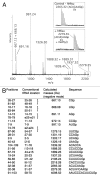The human tRNA m (5) C methyltransferase Misu is multisite-specific
- PMID: 22995836
- PMCID: PMC3597573
- DOI: 10.4161/rna.22180
The human tRNA m (5) C methyltransferase Misu is multisite-specific
Abstract
The human tRNA m ( 5) C methyltransferase Misu is a novel downstream target of the proto-oncogene Myc that participates in controlling cell division and proliferation. Misu catalyzes the transfer of a methyl group from S-adenosyl-L-methionine to carbon 5 of cytosines in tRNAs. It was previously shown to catalyze in vitro the intron-dependent formation of m ( 5) C at the first position of the anticodon (position 34) within the human pre-tRNA (Leu) (CAA). In addition, it was recently reported that C48 and C49 are methylated in vivo by Misu. We report here the expression of hMisu in Escherichia coli and its purification to homogeneity. We show that this enzyme methylates position 48 in tRNA (Leu) (CAA) with or without intron and positions 48, 49 and 50 in tRNA (Gly2) (GCC) in vitro. Therefore, hMisu is the enzyme responsible for the methylation of at least four cytosines in human tRNAs. By comparison, the orthologous yeast enzyme Trm4 catalyzes the methylation of carbon 5 of cytosine at positions 34, 40, 48 or 49 depending on the tRNAs.
Keywords: 5-methylcytosine; Misu; NSun2; RNA methyltransferase; Trm4; m5C; tRNA modification enzyme.
Figures




References
Publication types
MeSH terms
Substances
LinkOut - more resources
Full Text Sources
Molecular Biology Databases
Miscellaneous
